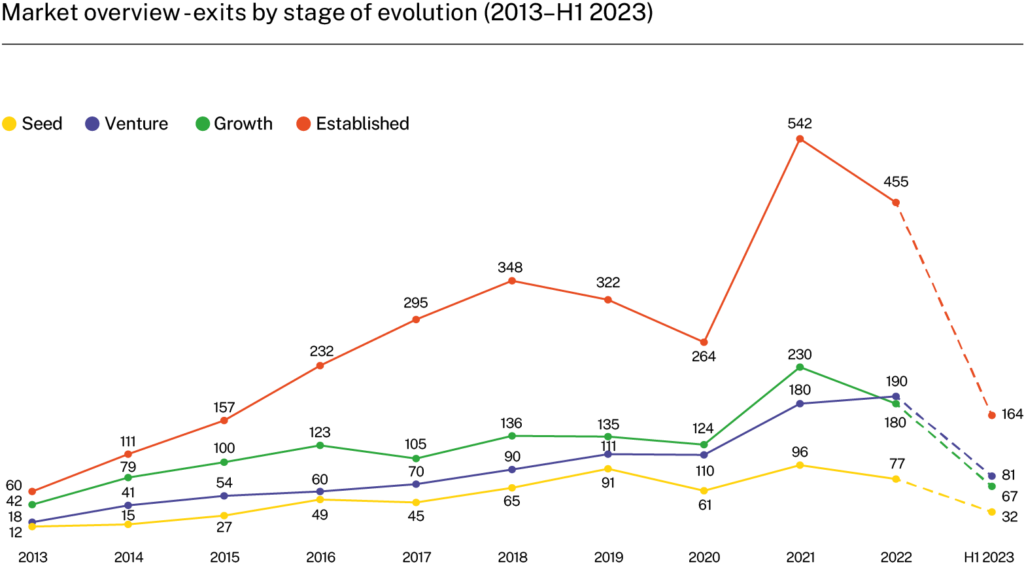
Charles Stanley Exits in the UK: A Summary
Harry Walker, 16 November 2023
In collaboration with Charles Stanley, our Exits in the UK report looks into the various ways in which high-growth UK companies choose to exit. This is usually through acquisition, however, IPOs, secondary transactions, and new liquidity release solutions are all becoming attractive alternative exit strategies.
Between 2013 and H1 2023 there have been 5,899 exits by high-growth companies, 96.3% by acquisitions and 3.71% by IPO. The exit market was extremely active in 2021, driven by economic stimulus measures during the COVID-19 pandemic. However, headwinds in 2022 have led to subdued activity in exit markets for high-growth UK businesses, which has carried into the first half of 2023.

IPO trends
219 high-growth UK companies have undergone an IPO since 2013, 55 of which were in 2021. This was a significant year for IPO activity and led to a total market capitalisation of £20.9b. Since then, activity has slumped, with 12 listings in 2022 and just one in 2023. An issue currently facing the UK is companies choosing to list abroad, which 20.1% of companies have done since 2013.
In an article for the Financial Times, Rosie Carr reports on the UK Investment Research Review, which encourages increased availability of research on listed companies. This initiative hopes to increase the attractiveness of the UK for investment. It also suggests this research should be available for retail investors too, to help attract a group that used to make up a 50% stake in the London market.
Secondary transactions
A secondary transaction involves the sale of existing shares in a company by a current shareholder, without the issuance of new shares. This kind of exit has increased in popularity since 2014, reaching a peak of 1,399 in 2021, up from 431 in 2014. This growth reflects the maturing entrepreneurial ecosystem that we see in the UK.
New liquidity solutions
Against this backdrop of a maturing UK ecosystem, businesses seek new ways to achieve liquidity that do not necessarily involve a full exit. Helen Thomas highlights in her Financial Times article the new London Stock Exchange platform that will facilitate this type of exit. The LSE’s “intermittent trading venue” will act as a platform where private companies can sell their shares without carrying out a market listing. This will help the LSE to take advantage of the private capital investment occurring in the UK.
Conclusion
Overall, the data shows spiked exit activity in 2021 and 2022. It is clear that economic stimulus measures from the COVID-19 pandemic have impacted the activity in these markets. Exit activity is more muted than in 2021 and 2022, but companies can still exit by acquisition at a similar rate to 2018 and 2019. In the public markets, IPO activity is at a decade low, despite the highs experienced in 2021, with a concerning trend of companies listing on foreign stock exchanges emerging in recent years. Bearing all that in mind, the emergence of a range of new options for liquidity and diversification provides some reason for optimism for founders.
Read the full report Exits in the UK here.
Grow your business.
Get access to unrivalled data on all the companies you need to know about, so you can approach the right leads, at the right time.
Book a demo today to see all of the key features of our platforms, as well as the depth and breadth of data available.
An associate will work with you to build a sophisticated search, returning a dynamic list of organisations that match your ideal customer profile.
Beauhurst Privacy Policy